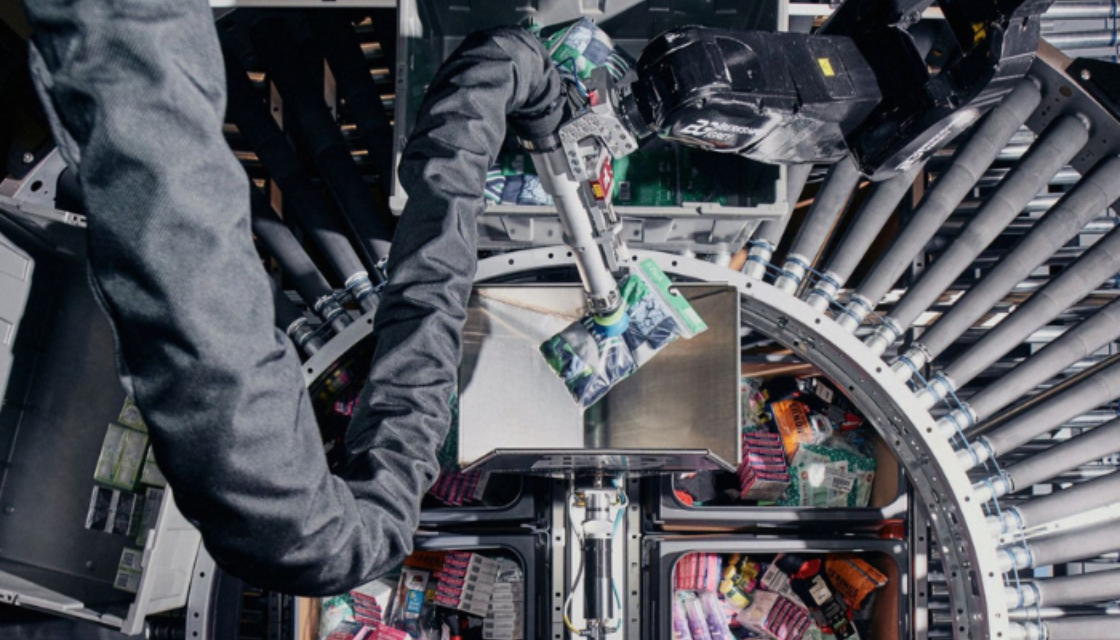The robotics landscape today is incredibly active and evolving very quickly, largely enabled by advances in AI related technology. There are many mind-bending technologies on display at tech conferences, in TV ads and of course our imaginations. But the list of companies solving real problems with practical systems that work at scale today is much, much smaller. That’s exactly why Canaan and I are so thrilled to be a small part of Berkshire Grey, a robotics and AI company launching from stealth today.
I met Berkshire Grey Founder and CEO Tom Wagner about 5 years ago, shortly after he left iRobot where he had been CTO and founded BG. When most people think of iRobot, they think of the automatic vacuum cleaner, but iRobot had many more complex applications for their technology, including for example helping identify IEDs during the war in Iraq. In his post-iRobot days, Tom had diligently searched for a new problem to tackle with AI and robotics – a problem with real-world applicability now. And what he found was a massive need for technology innovation in the world of warehouses, fulfillment centers and logistics providers in retail and e-commerce.
Like so many startups that nail timing for their idea, Berkshire Grey’s story really is about so much more than robotics and AI. It’s about the massive market forces driving the need for change in retail replenishment, e-commerce fulfillment and logistics. Consumers are demanding a shopping experience replete with an infinite selection of products that are immediately available at competitive prices – both online and off – which is upending retail, e-commerce and logistics. And yes, Amazon has played a big role in driving that change.
That’s where Berkshire Grey comes in. The BG team is building AI powered robotics systems that streamline, automate, scale, and make more efficient various aspects of the fulfillment and supply chain logistics that power retailers and related shipping and logistics companies. The BG systems encompass many capabilities at scale, including moving items, sorting them, aggregating them into intermediate groups and end-destination packages, integrating with internal inventory and supply chain management. They have to do this in a production environment, at scale, safely, with high-throughput and high-reliability. It’s an incredibly complex set of system design requirements.
One of the key capabilities they have developed is the ability to handle individual items in an unstructured environment – “robot picking.” Seemingly simple, it’s decidedly tricky at scale in a production environment where accuracy and speed are requirements. That’s the first piece of BG tech I saw when I met Tom during the company’s seed stage five years ago: a standalone robotic arm doing basic “picking.” Handling tens of thousands of items of arbitrary shape, size, weight, packaging and textures is incredibly challenging - not only because of the physical needs (i.e. gripping something and picking it up) but also due to the meta level information needed: What are these items jumbled together in a bin? Which one should I pick up? How can I tell what specific item SKU this is? What’s the best way to pick it up? Where should it be moved next? And what’s the best way to organize tens of thousands of items being moved through the system to eventual destinations?
Some business, like Amazon, have the scale and sophistication to attempt to solve some of these challenges themselves, but even they haven’t done it yet. I have yet to see the capabilities BG has built in any other robotics solution. BG’s platform makes best- and first-in-class technology available to anyone looking to solve those common problems.
Working with amazing entrepreneurs building cutting edge technology to solve big problems is the best part of my job, and I’ve had the privilege of working with many. Working with Tom and the team at BG is a highlight, without question. They have a “PhD with a screwdriver” mentality. You might have done groundbreaking research in academia on computer vision, robotic manipulation, reinforcement and transfer learning and such (and many of the BG team have, including longtime robotics leader Matt Mason), but when you start at BG you spend time with a screwdriver in hand, helping physically put systems together, to understand them inside out. That onboarding is a great example of BG’s culture: all about brilliant technologists developing practical solutions that work in the real world – research with a production mindset. In frontier technology, I believe that’s where the magic happens.
.png)